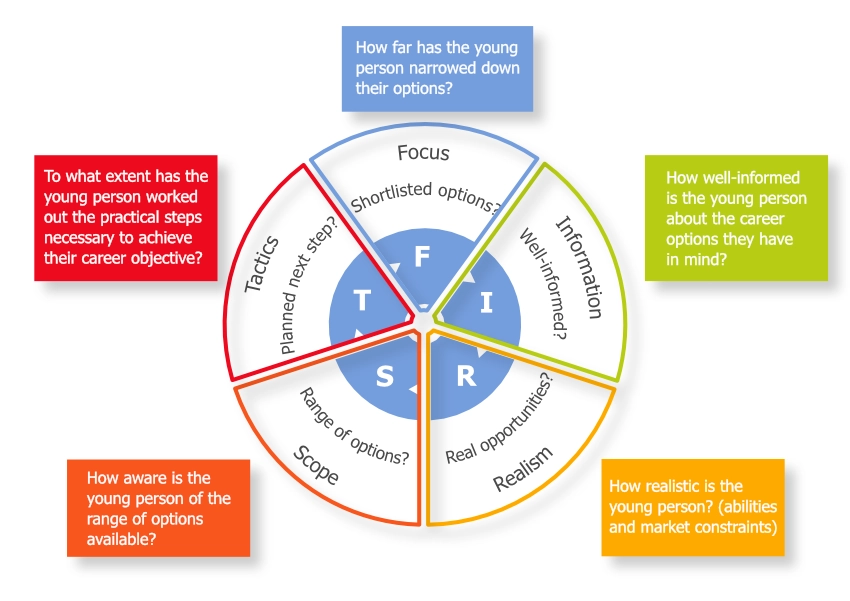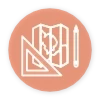The FIRST Model
Tol Bedford 1982
Table of Content
Definition
Bedford’s FIRST framework is regarded by many who try it as very useful in diagnosing where a client is in their planning. Kidd states that “Central to this framework is an initial diagnosis of the stage reached by the client at the start of the interview” (Kidd, 1996, p. 194). So this is far from a theory about everything and anything, it’s a very useful, focused model which can be used to assess where your client is in their planning and exploring.
What does it look like in reality and how can we use this in practice?
In practice, it consists of 5 different steps, not necessarily to be taken in this order, at the start of the interview before the contracting stage. In fact, it’s to determine what the contract will look like. Have a look at the illustration below to get a good idea of what it is. It’s focused on young people but it’s obviously expandable to all client groups. I hope this will clarify in one instant how you could use it, while it at the same time summarises what to look out for.

Focus – shortlisted options?
Has the client narrowed down their options?
Information – well informed?
How well informed is the client about the options they have in mind?
Realism – real opportunities?
How realistic is the client, linked to their abilities and market constraints?
Scope – range of options?
How aware is the client of the range of available options?
Tactics – planned next step?
To what extent has the client worked out the practical steps necessary to achieve their career objective?
As you can tell, this is ‘a bullet point list’ of what to focus your open questioning on. For those who are just starting out in the profession, it may even be a good idea to pin up a discreet version of this on the wall behind the client or where you can have a discreet look at it until you are familiar with it in practice.





